MaryAnn Bernal's Blog, page 195
February 20, 2015
History Trivia - First recorded wine auction held in London
February 20
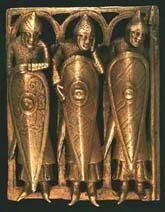 1071 William FitzOsbern, a staunch support of William the Conqueror, died.
1071 William FitzOsbern, a staunch support of William the Conqueror, died.
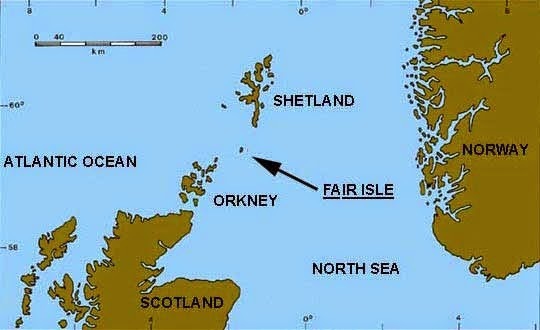
1472 Norway gave Orkney and Shetland islands to Scotland in lieu of a dowry for Margaret of Denmark.
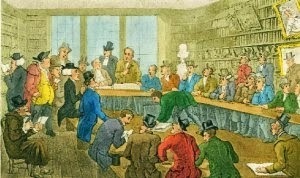
1673 First recorded wine auction held in London.
 1071 William FitzOsbern, a staunch support of William the Conqueror, died.
1071 William FitzOsbern, a staunch support of William the Conqueror, died.
1472 Norway gave Orkney and Shetland islands to Scotland in lieu of a dowry for Margaret of Denmark.

1673 First recorded wine auction held in London.
Published on February 20, 2015 02:00
February 19, 2015
Scribbler Tales (Volume Two) now available on iTunes

Written by: Mary Ann Bernal Narrated by: Roberto Scarlato Length: 1 hr and 7 mins Unabridged Audiobook
Madeline's personal feelings clouds her judgment in "Broken Promises" where she must choose between love and obeying the law. When the guilty walk, a vigilante executes the criminals in "Deception". "Endgame" finds a government researcher running for her life after discovering a horrific CIA secret in an isolated facility. A modern day Don Juan's life is turned upside down in "Malice" when he is falsely accused of rape. In "The Portrait", Holliday is obsessed with a formidable ancestor whose spirit wishes to possess her soul.
iTunes
Audible
Published on February 19, 2015 06:52
History Trivia - Roman Emperor Constantius II closes all pagan temples
February 19

197 Roman Emperor Septimius Severus defeated usurper Clodius Albinus in the Battle of Lugdunum, the bloodiest battle between Roman armies.
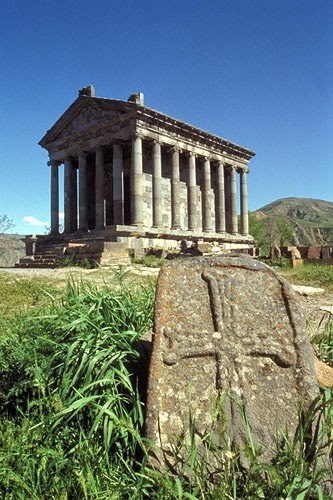
356 The Christian Roman emperor Constantius II issued a decree closing all pagan temples.

1408 The revolt of Henry Percy, Earl of Northumberland, against King Henry IV, ended with his defeat and death at Bramham Moor.

197 Roman Emperor Septimius Severus defeated usurper Clodius Albinus in the Battle of Lugdunum, the bloodiest battle between Roman armies.

356 The Christian Roman emperor Constantius II issued a decree closing all pagan temples.

1408 The revolt of Henry Percy, Earl of Northumberland, against King Henry IV, ended with his defeat and death at Bramham Moor.
Published on February 19, 2015 01:30
February 18, 2015
Largest trove of gold coins in Israel unearthed from ancient harbor
Fox News
 A group of divers in Israel has stumbled upon the largest hoard of gold coins ever discovered in the country. The divers reported the find to the Israel Antiquities Authority, and nearly 2,000 coins dating back to the Fatimid period, or the eleventh century, were salvaged by the authority’s Marine Archaeology Unit. The find was unearthed from the seabed of the ancient harbor in Caesarea National Park, according to a press release from the Israel Antiquities Authority.
A group of divers in Israel has stumbled upon the largest hoard of gold coins ever discovered in the country. The divers reported the find to the Israel Antiquities Authority, and nearly 2,000 coins dating back to the Fatimid period, or the eleventh century, were salvaged by the authority’s Marine Archaeology Unit. The find was unearthed from the seabed of the ancient harbor in Caesarea National Park, according to a press release from the Israel Antiquities Authority.
“The discovery of such a large hoard of coins that had such tremendous economic power in antiquity raises several possibilities regarding its presence on the seabed,” said Kobi Sharvit, director of the Marine Archaeology Unit of the Israel Antiquities Authority, in the release. “There is probably a shipwreck there of an official treasury boat which was on its way to the central government in Egypt with taxes that had been collected.”
Sharvit suggested that the treasure trove of coins might have been intended to pay the members of the Fatimid military garrison stationed at Caesarea, Israel. There are also other theories as the origins of the coins. Sharvit said that the coins could have belonged to a sunken merchant ship.
“The coins are in excellent state of preservation, and despite the fact they were at the bottom of the sea for about a thousand years, they did not require any cleaning or conservation intervention,” said Robert Cole, an expert numismaticist – someone who studies currency – with the antiquities authority.
The five divers have been called “model citizens” by the antiquities organization. Had the divers removed the objects from their location or tried to sell them, they could have faced a sentence of up to five years in prison.
The oldest of the coins is a quarter dinar that was minted in Palermo, Sicily during the second half of the ninth century. The majority of the coins can be traced back to the Faimid caliphs, Al-Ḥākim and his son Al-Ẓāhir who were alive in during the eleventh century. These coins were minted in Egypt and North Africa.
“There is no doubt that the discovery of the impressive treasure highlights the uniqueness of Caesarea as an ancient port city with rich history and cultural heritage,” stated the Caesarea Development Company and Nature and Parks Authority in the release. “After 2,000 years it is still capable of captivating its many visitors … when other parts of its mysterious past are revealed in the ground and in the sea.”
 A group of divers in Israel has stumbled upon the largest hoard of gold coins ever discovered in the country. The divers reported the find to the Israel Antiquities Authority, and nearly 2,000 coins dating back to the Fatimid period, or the eleventh century, were salvaged by the authority’s Marine Archaeology Unit. The find was unearthed from the seabed of the ancient harbor in Caesarea National Park, according to a press release from the Israel Antiquities Authority.
A group of divers in Israel has stumbled upon the largest hoard of gold coins ever discovered in the country. The divers reported the find to the Israel Antiquities Authority, and nearly 2,000 coins dating back to the Fatimid period, or the eleventh century, were salvaged by the authority’s Marine Archaeology Unit. The find was unearthed from the seabed of the ancient harbor in Caesarea National Park, according to a press release from the Israel Antiquities Authority.“The discovery of such a large hoard of coins that had such tremendous economic power in antiquity raises several possibilities regarding its presence on the seabed,” said Kobi Sharvit, director of the Marine Archaeology Unit of the Israel Antiquities Authority, in the release. “There is probably a shipwreck there of an official treasury boat which was on its way to the central government in Egypt with taxes that had been collected.”
Sharvit suggested that the treasure trove of coins might have been intended to pay the members of the Fatimid military garrison stationed at Caesarea, Israel. There are also other theories as the origins of the coins. Sharvit said that the coins could have belonged to a sunken merchant ship.
“The coins are in excellent state of preservation, and despite the fact they were at the bottom of the sea for about a thousand years, they did not require any cleaning or conservation intervention,” said Robert Cole, an expert numismaticist – someone who studies currency – with the antiquities authority.
The five divers have been called “model citizens” by the antiquities organization. Had the divers removed the objects from their location or tried to sell them, they could have faced a sentence of up to five years in prison.
The oldest of the coins is a quarter dinar that was minted in Palermo, Sicily during the second half of the ninth century. The majority of the coins can be traced back to the Faimid caliphs, Al-Ḥākim and his son Al-Ẓāhir who were alive in during the eleventh century. These coins were minted in Egypt and North Africa.
“There is no doubt that the discovery of the impressive treasure highlights the uniqueness of Caesarea as an ancient port city with rich history and cultural heritage,” stated the Caesarea Development Company and Nature and Parks Authority in the release. “After 2,000 years it is still capable of captivating its many visitors … when other parts of its mysterious past are revealed in the ground and in the sea.”
Published on February 18, 2015 07:57
History Trivia - Henry Tudor created Prince of Wales
February 18
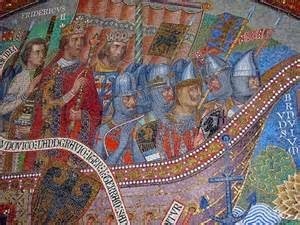
1229 The Sixth Crusade: Frederick II, Holy Roman Emperor signed a ten-year truce with al-Kamil, regaining Jerusalem, Nazareth, and Bethlehem with neither military engagements nor support from the papacy.

1478 George, Duke of Clarence, convicted of treason against his older brother Edward IV of England, was executed.
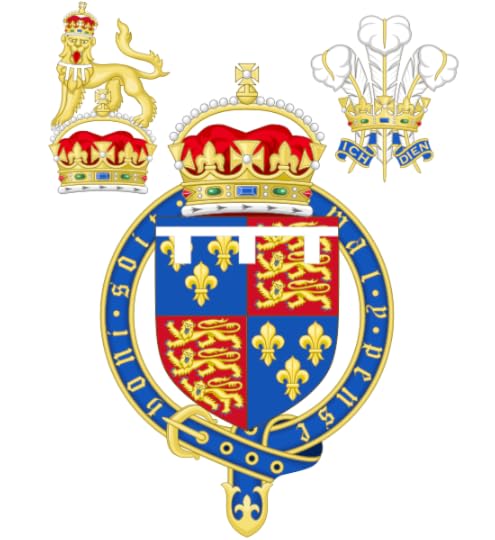
1503 Henry Tudor (Henry VIII) was created Prince of Wales.

1229 The Sixth Crusade: Frederick II, Holy Roman Emperor signed a ten-year truce with al-Kamil, regaining Jerusalem, Nazareth, and Bethlehem with neither military engagements nor support from the papacy.

1478 George, Duke of Clarence, convicted of treason against his older brother Edward IV of England, was executed.

1503 Henry Tudor (Henry VIII) was created Prince of Wales.
Published on February 18, 2015 00:30
February 17, 2015
Possible Anne Boleyn portrait found using facial recognition software
Ian Sample,The Guardian
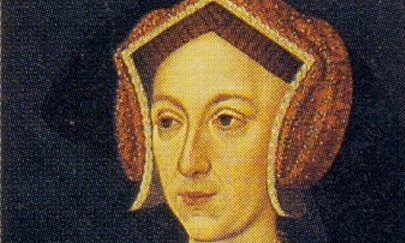 The Nidd Hall portrait held at the Bradford Art Galleries and Museums, thought to be of Anne Boleyn Images of beheaded queen were destroyed after her death in 1536, leaving only one contemporary likeness
The Nidd Hall portrait held at the Bradford Art Galleries and Museums, thought to be of Anne Boleyn Images of beheaded queen were destroyed after her death in 1536, leaving only one contemporary likeness
She won the heart of King Henry VIII, divided the church and lost her head. But nearly 500 years after Anne Boleyn met her death, only one uncontested portrait of her remains.
Pictures of the beguiling queen – who is played by a steely Claire Foy in the hit BBC historical drama Wolf Hall – were roundly destroyed after her death in 1536. The concerted effort to erase her from history was thorough, leaving only a battered lead disc as a contemporary likeness, the Moost Happi medal in the British Museum in London.
 Claire Foy and Damian Lewis as Anne Boleyn and King Henry VIII in the BBC’s adaptation of Wolf Hall Photograph: Ed Miller/BBC/Company Productions Ltd But another portrait from the late 16th century has emerged as a likely painting of the queen. Researchers in California used state-of-the-art face recognition to compare the face on the Moost Happi medal with a number of paintings and found a close match with the privately owned Nidd Hall portrait, held at the Bradford Art Galleries and Museums.
Claire Foy and Damian Lewis as Anne Boleyn and King Henry VIII in the BBC’s adaptation of Wolf Hall Photograph: Ed Miller/BBC/Company Productions Ltd But another portrait from the late 16th century has emerged as a likely painting of the queen. Researchers in California used state-of-the-art face recognition to compare the face on the Moost Happi medal with a number of paintings and found a close match with the privately owned Nidd Hall portrait, held at the Bradford Art Galleries and Museums.
The Nidd Hall artwork shows a woman wearing jewellery long thought to be Boleyn’s. But scholars have been divided on the figure’s identity. Some claim the woman is Boleyn’s successor, Jane Seymour, the third wife of King Henry VIII.
Amit Roy-Chowdhury, head of the video computing group at the University of California in Riverside, turned his expertise in computer face-recognition to renaissance art after he was asked for help by an art historian, Conrad Rudolph, a colleague at the university. “I had no idea about what art history really was,” he said. “My last interaction with art was probably some time in middle school.”
Three years later, Roy-Chowdhury has developed a program that learns to identify faces from their anatomical dimensions, such as the width of their noses, and the distance between their eyes, and more distinctive features, such as whether they have one straight eyebrow and one curved. After training the computer on pictures of known people, it can scan images of unknown characters and churn out probabilities on their identities.
 The lead Moost Happi medal, believed to be a commemorative coin and the only undisputed image of Anne Boleyn Using computers to recognise faces in old paintings is more challenging than picking out faces in a crowd. Facial recognition struggles with changes in pose, illumination, facial expressions and ageing. But in works of art, the computer must contend with the quirks of the artists’ styles. Another major hurdle is that often, precious few contemporary paintings exist on which to train the computer.
The lead Moost Happi medal, believed to be a commemorative coin and the only undisputed image of Anne Boleyn Using computers to recognise faces in old paintings is more challenging than picking out faces in a crowd. Facial recognition struggles with changes in pose, illumination, facial expressions and ageing. But in works of art, the computer must contend with the quirks of the artists’ styles. Another major hurdle is that often, precious few contemporary paintings exist on which to train the computer.
To improve its chances of finding a match, the program works out the best combination of facial measurements and discriminating features with which to look for matches.
Speaking at the American Association for the Advancement of Science meeting in San Jose, Roy-Chowdhury described his program’s attempts to identify characters in a collection of 57 paintings. The program found 14 matches, and was undecided on the identity of 26 people. The rest were not the characters Roy-Chowdhury had programmed the computer to look for.
 Reproduction of a portrait of Anne Boleyn in the National Portrait Gallery. Photograph: Roger-Viollet/Rex Features The system compared the Moost Happi medal image with four paintings from Tudor times, and failed to find a match with two portraits, including one from Hever Castle in Kent and another held at the National Portrait Gallery in London. More intriguingly, the system found what may be the earliest portrait of the astronomer Galileo Galilei.
Reproduction of a portrait of Anne Boleyn in the National Portrait Gallery. Photograph: Roger-Viollet/Rex Features The system compared the Moost Happi medal image with four paintings from Tudor times, and failed to find a match with two portraits, including one from Hever Castle in Kent and another held at the National Portrait Gallery in London. More intriguingly, the system found what may be the earliest portrait of the astronomer Galileo Galilei.
“These portraits have some importance. They probably represent someone of social standing, or some important event, and we often want to identify who is the person in the portrait,” he said. “What the computer gives at the end is another source of evidence for the discussions that have been going on about these questions.”
The system failed to resolve other debates in the world of art history though. The 17th-century Italian painter, Caravaggio, allegedly gave one of the figures in his altarpiece The Entombment of Christ the features of Michelangelo. But the computer found no matches when it compared the figure, Nicodemus, with bronze busts and a chalk drawing of Michelangelo.
Another Italian, the 15th-century artist Andrea Mantegna, painted a self-portrait, but may also have worked his image into some of his most famous works. But comparisons of his self-portrait with two prominent works found no evidence he had.
The system struggled to shed light on the validity of three paintings that may be of Shakespeare after comparing them with a sculpted bust, an engraving and a portrait at the National Portrait Gallery.
 The Nidd Hall portrait held at the Bradford Art Galleries and Museums, thought to be of Anne Boleyn Images of beheaded queen were destroyed after her death in 1536, leaving only one contemporary likeness
The Nidd Hall portrait held at the Bradford Art Galleries and Museums, thought to be of Anne Boleyn Images of beheaded queen were destroyed after her death in 1536, leaving only one contemporary likeness She won the heart of King Henry VIII, divided the church and lost her head. But nearly 500 years after Anne Boleyn met her death, only one uncontested portrait of her remains.
Pictures of the beguiling queen – who is played by a steely Claire Foy in the hit BBC historical drama Wolf Hall – were roundly destroyed after her death in 1536. The concerted effort to erase her from history was thorough, leaving only a battered lead disc as a contemporary likeness, the Moost Happi medal in the British Museum in London.
 Claire Foy and Damian Lewis as Anne Boleyn and King Henry VIII in the BBC’s adaptation of Wolf Hall Photograph: Ed Miller/BBC/Company Productions Ltd But another portrait from the late 16th century has emerged as a likely painting of the queen. Researchers in California used state-of-the-art face recognition to compare the face on the Moost Happi medal with a number of paintings and found a close match with the privately owned Nidd Hall portrait, held at the Bradford Art Galleries and Museums.
Claire Foy and Damian Lewis as Anne Boleyn and King Henry VIII in the BBC’s adaptation of Wolf Hall Photograph: Ed Miller/BBC/Company Productions Ltd But another portrait from the late 16th century has emerged as a likely painting of the queen. Researchers in California used state-of-the-art face recognition to compare the face on the Moost Happi medal with a number of paintings and found a close match with the privately owned Nidd Hall portrait, held at the Bradford Art Galleries and Museums.The Nidd Hall artwork shows a woman wearing jewellery long thought to be Boleyn’s. But scholars have been divided on the figure’s identity. Some claim the woman is Boleyn’s successor, Jane Seymour, the third wife of King Henry VIII.
Amit Roy-Chowdhury, head of the video computing group at the University of California in Riverside, turned his expertise in computer face-recognition to renaissance art after he was asked for help by an art historian, Conrad Rudolph, a colleague at the university. “I had no idea about what art history really was,” he said. “My last interaction with art was probably some time in middle school.”
Three years later, Roy-Chowdhury has developed a program that learns to identify faces from their anatomical dimensions, such as the width of their noses, and the distance between their eyes, and more distinctive features, such as whether they have one straight eyebrow and one curved. After training the computer on pictures of known people, it can scan images of unknown characters and churn out probabilities on their identities.
 The lead Moost Happi medal, believed to be a commemorative coin and the only undisputed image of Anne Boleyn Using computers to recognise faces in old paintings is more challenging than picking out faces in a crowd. Facial recognition struggles with changes in pose, illumination, facial expressions and ageing. But in works of art, the computer must contend with the quirks of the artists’ styles. Another major hurdle is that often, precious few contemporary paintings exist on which to train the computer.
The lead Moost Happi medal, believed to be a commemorative coin and the only undisputed image of Anne Boleyn Using computers to recognise faces in old paintings is more challenging than picking out faces in a crowd. Facial recognition struggles with changes in pose, illumination, facial expressions and ageing. But in works of art, the computer must contend with the quirks of the artists’ styles. Another major hurdle is that often, precious few contemporary paintings exist on which to train the computer.To improve its chances of finding a match, the program works out the best combination of facial measurements and discriminating features with which to look for matches.
Speaking at the American Association for the Advancement of Science meeting in San Jose, Roy-Chowdhury described his program’s attempts to identify characters in a collection of 57 paintings. The program found 14 matches, and was undecided on the identity of 26 people. The rest were not the characters Roy-Chowdhury had programmed the computer to look for.
 Reproduction of a portrait of Anne Boleyn in the National Portrait Gallery. Photograph: Roger-Viollet/Rex Features The system compared the Moost Happi medal image with four paintings from Tudor times, and failed to find a match with two portraits, including one from Hever Castle in Kent and another held at the National Portrait Gallery in London. More intriguingly, the system found what may be the earliest portrait of the astronomer Galileo Galilei.
Reproduction of a portrait of Anne Boleyn in the National Portrait Gallery. Photograph: Roger-Viollet/Rex Features The system compared the Moost Happi medal image with four paintings from Tudor times, and failed to find a match with two portraits, including one from Hever Castle in Kent and another held at the National Portrait Gallery in London. More intriguingly, the system found what may be the earliest portrait of the astronomer Galileo Galilei. “These portraits have some importance. They probably represent someone of social standing, or some important event, and we often want to identify who is the person in the portrait,” he said. “What the computer gives at the end is another source of evidence for the discussions that have been going on about these questions.”
The system failed to resolve other debates in the world of art history though. The 17th-century Italian painter, Caravaggio, allegedly gave one of the figures in his altarpiece The Entombment of Christ the features of Michelangelo. But the computer found no matches when it compared the figure, Nicodemus, with bronze busts and a chalk drawing of Michelangelo.
Another Italian, the 15th-century artist Andrea Mantegna, painted a self-portrait, but may also have worked his image into some of his most famous works. But comparisons of his self-portrait with two prominent works found no evidence he had.
The system struggled to shed light on the validity of three paintings that may be of Shakespeare after comparing them with a sculpted bust, an engraving and a portrait at the National Portrait Gallery.
Published on February 17, 2015 05:58
Villa Owned by Ben Hur's Rival Identified
Rossella Lorenzi Discovery News
 The remains of a swimming pool once encircled by a colonnaded porch reveal the magnificence of the site. Unfortunately little has remained of the villa’s original decorations, apart from fragments of white, grey and black mosaic floor
The remains of a swimming pool once encircled by a colonnaded porch reveal the magnificence of the site. Unfortunately little has remained of the villa’s original decorations, apart from fragments of white, grey and black mosaic floor
Archaeologists investigating the Tuscan island of Elba have identified the remains of the villa belonging to the real-life individual that inspired one of the principal characters in the epic tale of Ben-Hur.
Overlooking Portoferraio’s bay, the once magnificent 1st-century B.C. estate, known as Villa Le Grotte (the Caves) because of the shape of its vaulted facades facing the sea, has long been believed to have been owned by Marcus Valerius Messalla Corvinus, portrayed as Ben-Hur in the Hollywood blockbuster starring Charlton Heston.
While Ben-Hur was a fictional villain dreamed up in Lew Wallace's 1880 novel and immortalized in the 1959 MGM movie, the Messalla character was based on a real-world historical figure.
Photos: Excavating the Ancient VillaMarcus Valerius Messalla Corvinus was a member of one of the oldest and most important families in Rome, the patron of the poet Ovid, and a commander at the battle of Actium in 31 B.C., fighting for Octavian against the forces of Mark Antony and Cleopatra.
According to archaeologists Laura Pagliantini, Luisa Zito and Luisa Quaglia, of the Archeo Color Association, the now ruined villa, which is currently closed to the public, has long been associated to Messalla’s patrician family but no evidence was ever found to confirm the speculation.
“The poet Ovid of whom Messalla was patron, recounts how he went to visit Messalla’s son on Elba prior to his exile to Tomis on the Black Sea, but he doesn’t provide any detail about the place he was staying,” Pagliantini told Discovery News.
The villa where Ovid stayed as a guest could have been one of the three monumental residences which are known to have been built on Elba.
Photos: Ancient Water Basin Found in Rome
Startling evidence about Le Grotte’s owner came when archaeologists led by Franco Cambi, professor of methodology of archaeological research at the University of Siena, excavated the area just below the villa.
“We were looking for ancient furnaces used in the production of iron, but we ended up with a surprising finding,” Cambi told Discovery News.
Along with the remains of a large collapsed building, the archaeologists found five dolia -- large earthenware vases -- complete with their covers. Each vase could hold between 1,300 and 1,500 liters of wine.
“Clearly, the site was a farm serving the Roman villa above,” Cambi said.
 The remains of a swimming pool once encircled by a colonnaded porch reveal the magnificence of the site. Unfortunately little has remained of the villa’s original decorations, apart from fragments of white, grey and black mosaic floor
The remains of a swimming pool once encircled by a colonnaded porch reveal the magnificence of the site. Unfortunately little has remained of the villa’s original decorations, apart from fragments of white, grey and black mosaic floor Archaeologists investigating the Tuscan island of Elba have identified the remains of the villa belonging to the real-life individual that inspired one of the principal characters in the epic tale of Ben-Hur.
Overlooking Portoferraio’s bay, the once magnificent 1st-century B.C. estate, known as Villa Le Grotte (the Caves) because of the shape of its vaulted facades facing the sea, has long been believed to have been owned by Marcus Valerius Messalla Corvinus, portrayed as Ben-Hur in the Hollywood blockbuster starring Charlton Heston.
While Ben-Hur was a fictional villain dreamed up in Lew Wallace's 1880 novel and immortalized in the 1959 MGM movie, the Messalla character was based on a real-world historical figure.
Photos: Excavating the Ancient VillaMarcus Valerius Messalla Corvinus was a member of one of the oldest and most important families in Rome, the patron of the poet Ovid, and a commander at the battle of Actium in 31 B.C., fighting for Octavian against the forces of Mark Antony and Cleopatra.
According to archaeologists Laura Pagliantini, Luisa Zito and Luisa Quaglia, of the Archeo Color Association, the now ruined villa, which is currently closed to the public, has long been associated to Messalla’s patrician family but no evidence was ever found to confirm the speculation.
“The poet Ovid of whom Messalla was patron, recounts how he went to visit Messalla’s son on Elba prior to his exile to Tomis on the Black Sea, but he doesn’t provide any detail about the place he was staying,” Pagliantini told Discovery News.
The villa where Ovid stayed as a guest could have been one of the three monumental residences which are known to have been built on Elba.
Photos: Ancient Water Basin Found in Rome
Startling evidence about Le Grotte’s owner came when archaeologists led by Franco Cambi, professor of methodology of archaeological research at the University of Siena, excavated the area just below the villa.
“We were looking for ancient furnaces used in the production of iron, but we ended up with a surprising finding,” Cambi told Discovery News.
Along with the remains of a large collapsed building, the archaeologists found five dolia -- large earthenware vases -- complete with their covers. Each vase could hold between 1,300 and 1,500 liters of wine.
“Clearly, the site was a farm serving the Roman villa above,” Cambi said.
Published on February 17, 2015 05:49
History Trivia - Edward Gibbon publishes the The History of the Decline and Fall of the Roman Empire
February 17
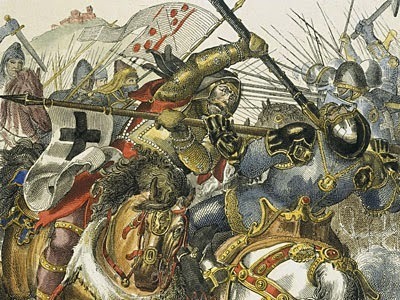
1370 The Battle of Rudau - Teutonic knights defeated the Lithuanians in their attempt to Christianize the country.
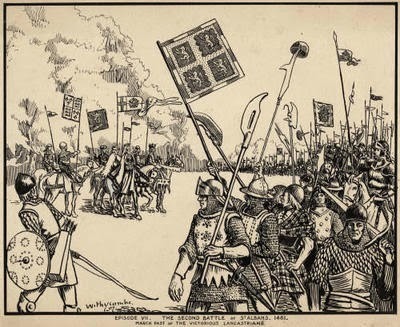
1461 Second Battle of Saint Albans where the Lancastrians were victorious, and were able to free King Henry VI who had been imprisoned by the Earl of Warwick.
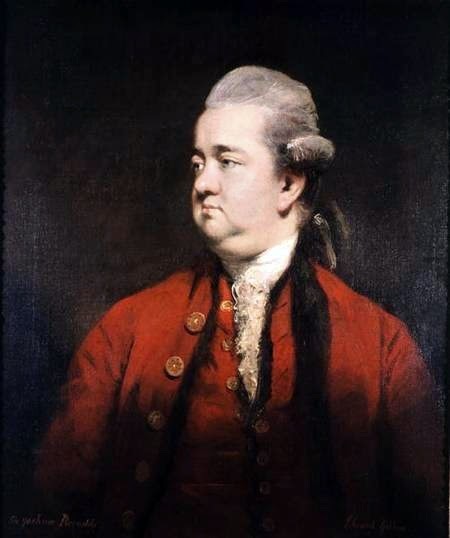
1779 British historian Edward Gibbon published the The History of the Decline and Fall of the Roman Empire.

1370 The Battle of Rudau - Teutonic knights defeated the Lithuanians in their attempt to Christianize the country.

1461 Second Battle of Saint Albans where the Lancastrians were victorious, and were able to free King Henry VI who had been imprisoned by the Earl of Warwick.

1779 British historian Edward Gibbon published the The History of the Decline and Fall of the Roman Empire.
Published on February 17, 2015 01:30
February 16, 2015
History Trivia - Pope Gregory the Great decrees "God bless you" is the correct response to a sneeze
February 16

116 Emperor Trajan sent laureatae (word of military glory) to the Roman Senate at Rome on account of his victories and being conqueror of Parthia.

600 Pope Gregory the Great decreed the saying "God bless you" is the correct response to a sneeze.
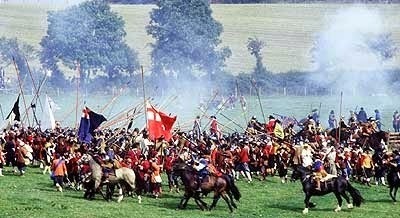
1646 The Battle of Great Torrington, Devon was the last major battle of the first English Civil War.

116 Emperor Trajan sent laureatae (word of military glory) to the Roman Senate at Rome on account of his victories and being conqueror of Parthia.

600 Pope Gregory the Great decreed the saying "God bless you" is the correct response to a sneeze.

1646 The Battle of Great Torrington, Devon was the last major battle of the first English Civil War.
Published on February 16, 2015 02:30
February 15, 2015
History Trivia - Julius Caesar refuses the diadem of royalty
February 15
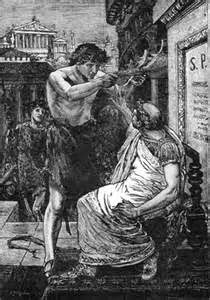
44 BC, Mark Antony offered Julius Caesar the diadem of royalty which he refused.

670 Oswy, King of Bernicia and subordinate to King Penda of Mercia for 13 years died. When Penda invaded Bernicia, he was killed by Oswy's forces. Oswy then united all of Northumbria, which he ruled from 655 until his death.
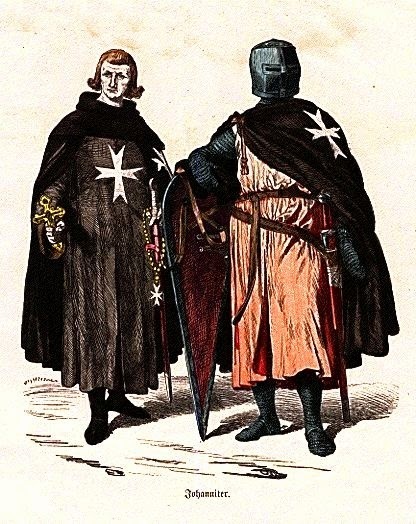
1113 Knights Hospitaller was formally named and recognized. The Hospitallers were founded to care for sick pilgrims in Jerusalem. The order evolved throughout the Crusades and still exists today.

44 BC, Mark Antony offered Julius Caesar the diadem of royalty which he refused.

670 Oswy, King of Bernicia and subordinate to King Penda of Mercia for 13 years died. When Penda invaded Bernicia, he was killed by Oswy's forces. Oswy then united all of Northumbria, which he ruled from 655 until his death.

1113 Knights Hospitaller was formally named and recognized. The Hospitallers were founded to care for sick pilgrims in Jerusalem. The order evolved throughout the Crusades and still exists today.
Published on February 15, 2015 02:00



